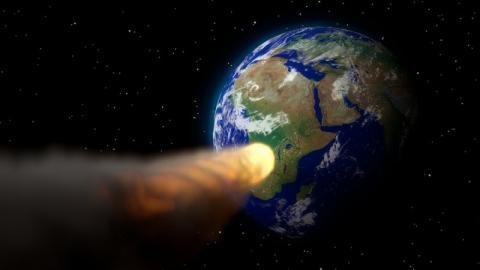'Potentially hazardous' monster asteroid, nearly 3 miles in size, will skim past Earth on Sept. 1

Fly-by radar imaging shows tiny asteroidEarth is getting ready for a rare celestial encounter with a massive asteroid in less than two weeks from now. Dubbed "Florence," the huge 2.7 miles (4.4 kilometres) space rock will make a "relatively close encounter" with our plant on September 1, NASA announced on Friday.While passing safely by Earth, Florence will be at a distance of about 4.4 million miles (7 million kilometres) or nearly 18 times the distance between Earth and the Moon. It's among the largest near-Earth asteroids that are several miles in size, the space agency said, citing measurements from its Spitzer Space Telescope and NEOWISE mission.
According to NASA, the upcoming encounter will be the closest an asteroid of this size ever had with Earth since the agency first began tracking near-Earth objects. Astronomers hope that next month's encounter will help them study Florence up close, allowing ground-based radar observations to reveal its real size and surface details as small as about 30 feet (10 metres)."While many known asteroids have passed by closer to Earth than Florence will on September 1, all of those were estimated to be smaller," Paul Chodas, manager of NASA's Center for Near-Earth Object Studies (CNEOS) at the agency's Jet Propulsion Laboratory, said in a statement. "Florence is the largest asteroid to pass by our planet this close since the NASA program to detect and track near-Earth asteroids began."Discovered by Schelte "Bobby" Bus at Siding Spring Observatory in Australia in March 1981, the asteroid is named after Florence Nightingale, the founder of modern nursing. The upcoming encounter is said to be the closest by Florence since 1890, and the closest it will ever be until after 2500.Astronomers have predicted that Florence will brighten to ninth magnitude in late August and early September, and will be visible with small telescopes for several nights as it moves through the constellations, including Piscis Austrinus, Capricornus, Aquarius and Delphinus.
A large asteroid will pass Earth safely on Sept. 1 at about 18 times the distance between the Earth and the Moon: https://t.co/rOn5It1v2Jpic.twitter.com/0TkCxhMFau— NASA (@NASA) August 19, 2017
Potentially HazardousFlorence is classified as a "potentially hazardous" asteroid, and is ranked fourth in diameter after 53319 1999 JM8 (7 kilometres), 4183 Cuno (5.6 kilometres) and 3200 Phaethon (5.1 kilometres).Potentially hazardous space objects like asteroids and comets have an orbit that has the potential to make close approaches to the Earth. These space rocks are typically huge in size, and are capable of causing significant damage to regions on impact.Risk of asteroid strike is 'very high'A European scientist said in June that the Earth is at "very high risk" of being hit by an asteroid, which can cause "devastating" impact on humanity. The scientist also warned that we currently have no defences which can thwart such a disastrous event."Sooner or later we will get... a minor or major impact," Rolf Densing, who heads the European Space Operations Centre (ESOC) in Darmstadt, said, adding that it may not happen in our lifetime, but the risk that out plant will get hit one day is very high."We are not ready to defend ourselves... We have no active planetary defence measures," Densing said.
NASA, meanwhile, is working on a pioneering mission to deflect an asteroid. Dubbed the "Asteroid Impact and Deflection Assessment (AIDA)," the mission will use the Double Asteroid Redirection Test (DART) spacecraft, which would hit an asteroid and find out whether it can deflect the space rock's path.The DART spacecraft is currently in its design phase, and is planned to undergo an asteroid deflection drill mission in 2022.